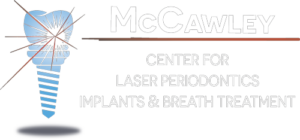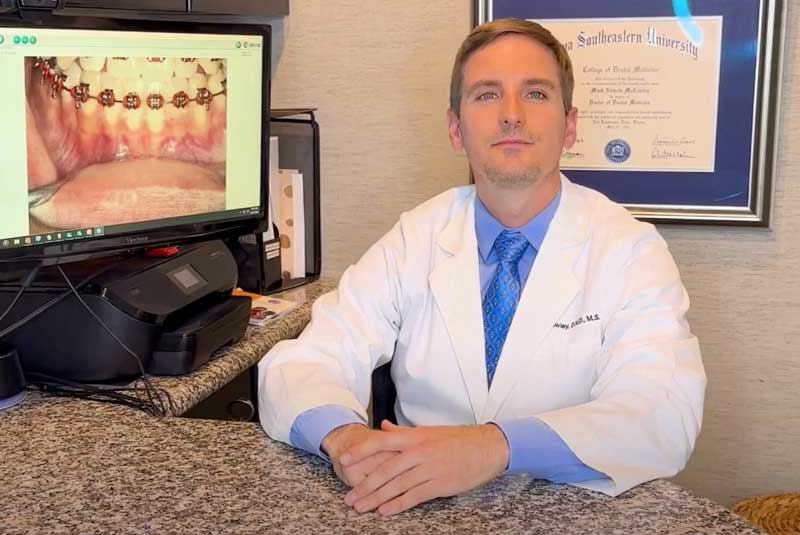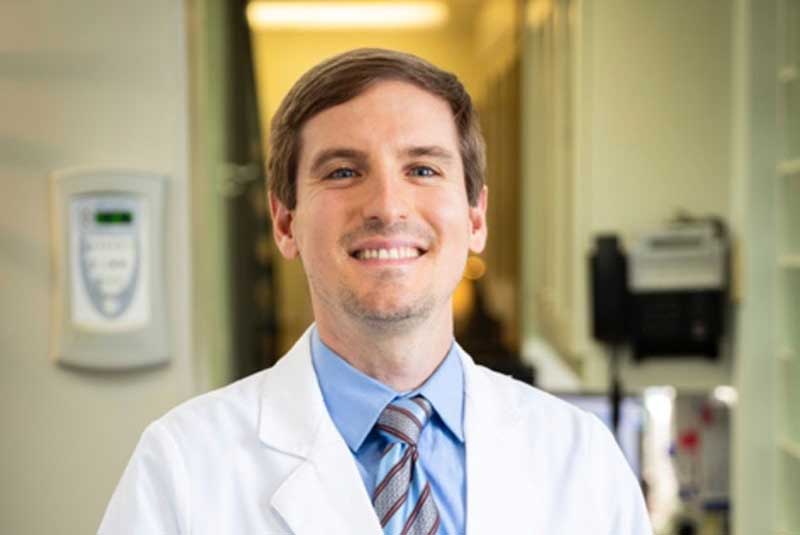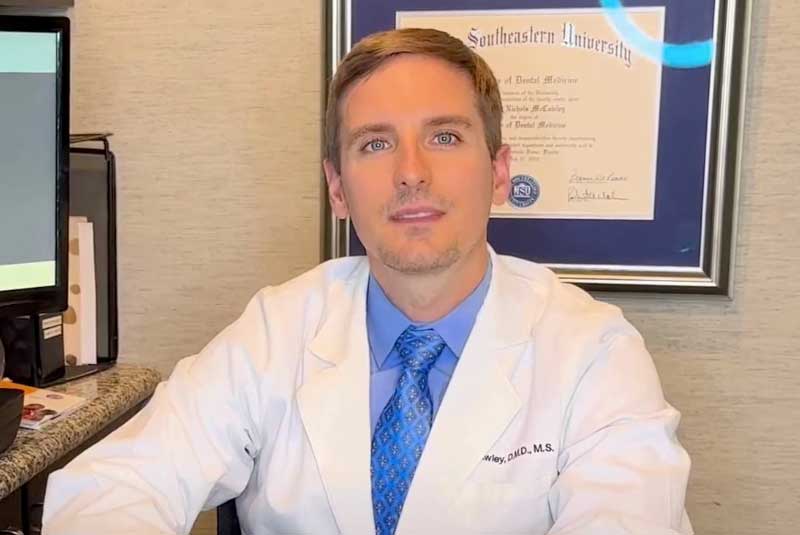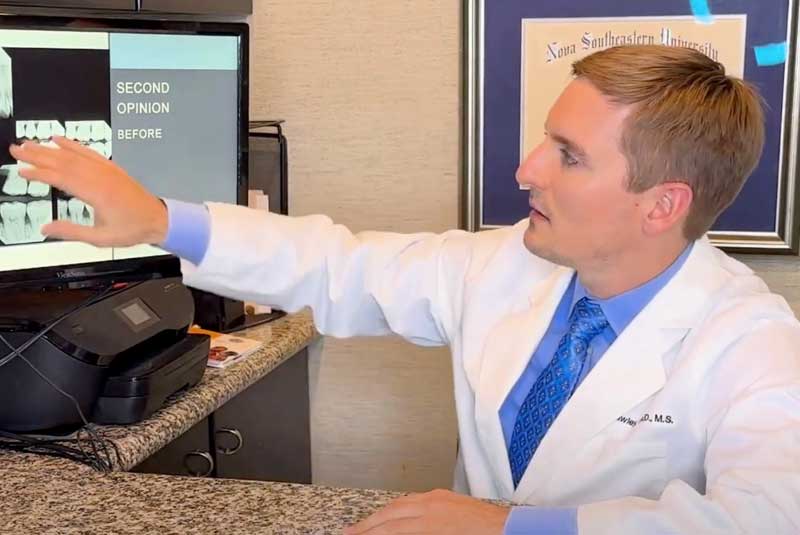1. Brushing my teeth three times per day is the most important way to prevent gum disease.
Since 90% of gum disease occurs between the teeth, cleaning between the teeth with floss, proxabrushes or some other tool is most important and should be done first. For most people, we recommend The FBI. Tongue clean first, then floss, then brush, then irrigate. Cleaning between the teeth once per day is sufficient. Because the bad bacteria takes several days to regrow, even twice per week is very helpful. It is also a myth that oral irrigation is an alternative to flossing or other inter dental cleaners. They are helpful after flossing and brushing but, on their own, will not sufficiently remove the bacterial plaque that form a biofilm that is mostly impervious to irrigation or rinsing.
2. Once I have implants, I don’t have to worry about gum disease anymore.
Although dental implants have demonstrated a very high survival rate, one recent study followed 2300 implants for 10 years and found that severe periodontal disease caused eight times the risk of implant failure. Multiple recent studies have shown that gum infection of implants (peri-implantitis) is caused by the same bacteria that cause gingivitis and periodontitis. To avoid cross bacterial infection of implants, it is critical to manage periodontal infection throughout the mouth prior to starting implant therapy to prevent the implants from getting infected. Once infection and bone loss starts, treatment of ailing and failing implants is challenging. We have found the best treatment is to use the Nd:YAG laser with the LANAP technique. In many cases, we have been able to stop the infection and in some cases regenerate the bone.
3. Laser treatment is not effective against periodontal disease.
On the contrary, certain types of lasers are extremely effective. The Nd:YAG wavelength that we use has had two large histological studies and several clinical studies that have shown it to be remarkably effective in producing new bone and new attachment to the root. No other periodontal treatment has been able to show this healing of the pockets from the bottom up. We use this routinely to treat periodontal disease and seldom use the old cutting and stitching. We had the first Nd:YAG laser in the country 22 years ago and our office has treated over 5000 patients with laser treatment making us likely the most experienced laser users for periodontal treatment in the world.
4. The focus of periodontal treatment should be on the pockets.
Pockets are the result of a bacterial infection. The focus needs to be on getting rid of the cause of the pockets, bacterial infection and then controlling reinfection. In our office often this includes culturing to identify the specific bacteria and using the indicated antibiotics to help eliminate or reduce those bacteria. In addition, we use the laser, irrigation with antiseptics, probiotics and improved mechanical plaque control. We also try to help control other risk factors which often contribute to periodontal destruction such as smoking, diabetes and excessive biting forces.
5. If I have PPO dental insurance and you are not on my list, I can’t come to your office.
With PPO plans, you are able to see any periodontist. When you go to an “out of network” provider (someone not on your list), your PPO plan will still cover a portion of your dental fees. Many times we find that your “in network” total expenses are similar to the fees that we charge. We are happy to assist you with your insurance benefits and answer any questions you may have
6. Bad breath comes from the stomach.
Hardly ever. It usually comes from bacteria located on the very back of the tongue and between the teeth. Using a tongue cleaner on the back of the tongue with multiple strokes will help control most bad breath. It’s also important to avoid onions and garlic in your food.
7. Many people have bleeding gums so bleeding is not a concern.
Bleeding gums always indicates disease and needs treatment because it may lead to more severe gum disease. Often it can be as simple as better oral hygiene and more frequent maintenance but sometimes it may need more involved treatment.
8. Only Doctors can give patients local anesthesia.
Actually, Florida is one of 45 states that allow hygienists who have been trained and certified to administer local anesthesia to patients. We are fortunate to have four hygienists in our office that are qualified and skilled to give local anesthesia to ensure your visits are pain free.
9. Dental x-rays are dangerous.
Recently there have been several stories in the media implying that dental x-rays are dangerous. According to the American Society of Radiologic Technicians web site, “Dental x-rays are one of the lowest radiation dose studies performed. A routine exam which includes 4 bitewings is about 5 microsieverts, which is less than one day of natural background radiation. It is also about the same amount of radiation exposure from a short airplane flight (~1-2 hrs).” To put this in perspective, a medical cardiac CT scan has 16,000 microsieverts of radiation while a full set of 18 digital dental films like we use in our office produces only four microsieverts of radiation and our dental CT scan has only about 80 microsieverts
10. Periodontal disease is not associated with heart disease.
The body of evidence that periodontal disease may increase the risk of heart attack and stroke as well as a host of other systemic diseases has been growing for the past 15 years. The American Heart Association recently released a press release emphasizing that “studies have found an association between periodontal disease and atherosclerotic vascular diseases that cannot be explained by other risk factors such as smoking, high cholesterol, etc.” A new large Swedish study strengthens that evidence. Nearly 8000 patients with periodontal disease were evaluated. Those with a higher number of deep pockets had a 53 per cent increased risk of heart attack. Those with the highest incidence of bleeding gums had more than twice the risk of stroke.

